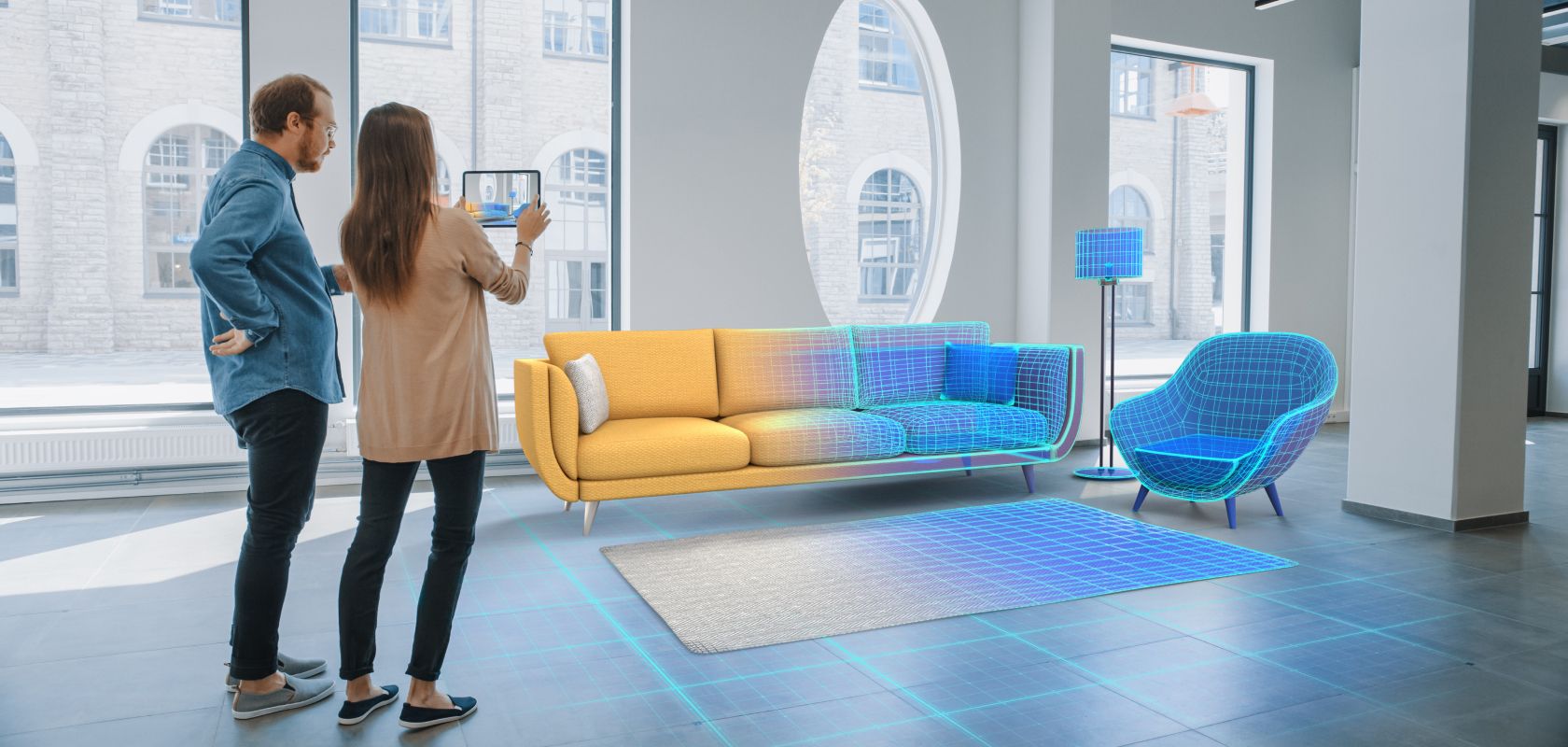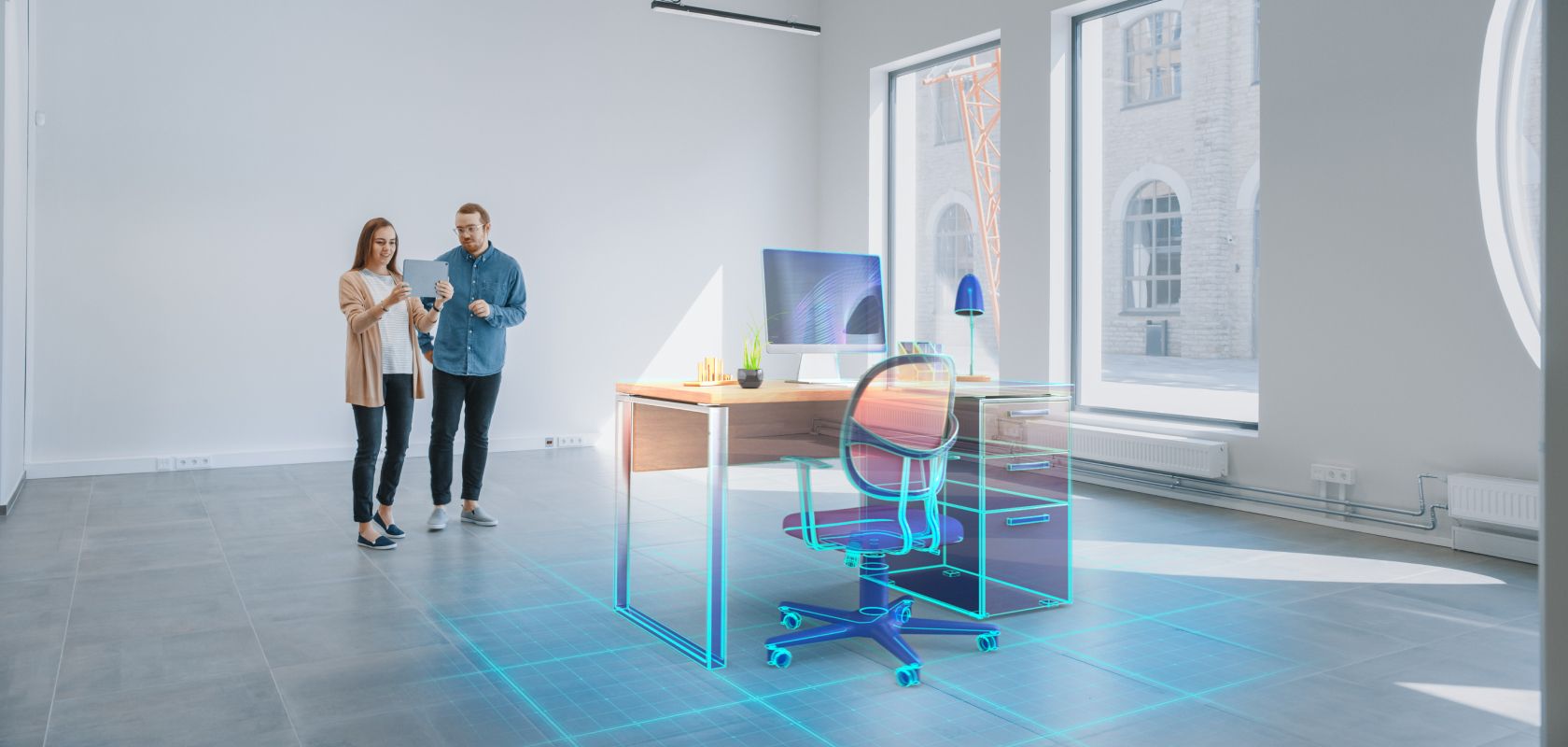FURNITURE AND HOME DECOR
The Future of Furniture and Home Décor Buying
Immersive technologies are transforming the furniture and interior design industry by providing a new way for customers to experience products in their homes. Virtual reality (VR), augmented reality (AR), and mixed reality (MR) are all being used to create realistic simulations of furniture and home décor that can be experienced before making a purchase. This technology is particularly useful for furniture and interior design companies because it allows customers to see how a piece of furniture will look in their home before they buy it. It also allows customers to experiment with different design ideas and see how they would work in their space. This type of experiential shopping is becoming increasingly popular, as customers are looking for ways to avoid making costly mistakes when purchasing furniture.
Immersive Technologies Explained
Immersive technologies have had a critical impact on all economic sectors’ development, expansion, and growth. The impact of these technologies has been significant in the way businesses operate and interact with their customers. For instance, companies have started to implement these technologies in their marketing strategies to engage potential customers. Immersive technologies include virtual reality (VR), augmented reality (AR), mixed reality (MR), and 3D. These technologies provide an immersive experience that engages the senses of sight, sound, and touch. This allows businesses to create an environment that is realistic and interactive.
Uses and Applications of Immersive Technologies in the Furniture & Home Décor Industry
Immersive technologies have been used in different ways in the furniture and home décor industry. For example, AR and VR have been used in product design and development, store planning and layout, customer experience and sales, marketing and advertising.
AR and VR can be used to create realistic simulations of products or environments for designers or customers to interact with. This can help with everything from getting an idea of how a piece of furniture will look in a room to how a new store layout will work.
AR and VR can also be used to create immersive experiences for customers. This can range from simply giving them a realistic view of a product to being able to walk around and explore a virtual environment.
The Metaverse is the next step after AR and VR. It is a fully immersive, digital world where people can interact with each other and with digital content. This is still in development, but it has the potential to change the furniture and home décor industry in a big way. The Metaverse can be used for things like product design and development, store planning and layout, customer experience and sales, marketing and advertising. It can also be used for things like training and education, events and conferences, and even just socializing.
Try before you buy.
In the past, buying furniture and home décor was a bit of a guessing game. Shoppers would go to a store, pick out something they liked, and hope it looked good in their home. But with immersive technologies, they can now try before they buy. Augmented reality -powered apps let customers place virtual furniture in their homes to see how it looks prior to buying.
Product customization.
Another big change is the move to product customization. With the help of 3D configurators, shoppers can easily design and customize furniture and home décor to their exact specifications.
In-store engagement.
To increase in-store engagement organization have commenced to make use of cutting-edge technologies like augmented reality (AR) and virtual reality (VR). These immersive technologies give potential customers a truly unique and memorable experience that will make them want to come back for more.
Showcasing.
Virtual furniture showrooms are an excellent way for customers to see what furniture would look like in their homes without having to physically move the pieces around. This is especially beneficial for people who are looking to buy large pieces of furniture, such as a couch or a dining room table. These showrooms can also be used to help customers visualize how different colors and styles of furniture would look in their home.
Design and manufacturing.
With the help of virtual reality (VR), designers can create unique and customized furniture that is tailored to the specific needs and preferences of their customers. VR allows designers to create a 3D model of their design which can be viewed from all angles. This gives customers a realistic view of how the furniture will look in their home. Customers can also request for specific changes to be made to the design before it is finalized. Similarly, augmented reality (AR) can be used by furniture retailers to give customers a preview of how the furniture will look in their home. AR technology can overlay a digital image of the furniture onto a real-world setting. This allows customers to see how the furniture will fit into their home and make sure that they are happy with the purchase before committing to it.
Takeaway
Augmented Reality, Virtual Reality, and the metaverse are changing the way shop and learn.
For furniture and home décor retailers, this means that customers can now try out products in their homes before they buy them. Augmented Reality (AR) and Virtual Reality (VR) apps allow customers to see how a piece of furniture would look in their own home, and then make a purchase without ever having to leave the comfort of their living room. In addition to making shopping more convenient, these technologies also have the potential to change the way people interact with their homes. For example, AR and VR can be used to give customers a virtual tour of their future home or help them plan a complete home makeover.
As these technologies continue to evolve, it is clear that they will have a profound impact on the furniture and home décor industry. Retailers who embrace these technologies will be able to provide their customers with a unique and immersive shopping experience that is unlike anything they have ever experienced before.


